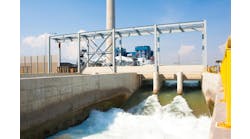For the 17th year in a row Eastman Chemical Co., Kingsport, Tenn., earned energy efficiency awards from the American Chemistry Council (ACC). As part of the Responsible Care program, the ACC honors specific projects that have achieved distinction in reducing energy consumption and greenhouse gas emissions. Eastman received four awards, two of which received an 'exceptional merit' designation.
"Eastman is honored to be awarded again. This recognition demonstrates Eastman's continued commitment to being a sustainable company, and specifically to improving energy efficiency and reducing our greenhouse gas emissions," says Jim Rogers, CEO.
Eastman's Kingsport site received "exceptional merit" awards for:
• Implementing a campaign strategy to increase hydroquinone yield and energy efficiency by running the plant at maximum production rates, building inventory, then taking extended shutdowns to control inventory to acceptable levels and lower overall energy use. The project saved almost 106,000 MMBtus for a 16% annualized energy savings compared to 2008, according to the company. This energy savings translates to a reduction in greenhouse gas emissions of 11,000 tons of CO2 equivalent.
• Replacing sieve trays in three large distillation columns with high-efficiency trays that improved the hydraulic profile and separation efficiency. Additionally, distillation modeling identified a more efficient way to operate and control the columns once the trays were installed. The result was lower reflux rates, improved control and significantly improved energy efficiency. The column energy consumption improved 13%, saving 220,000 MM Btus and reducing greenhouse gas emissions by 23,000 tons.
In addition to these "exceptional merit" awards, the Kingsport site was recognized for two additional projects:
• Installing a new type of orifice trap in a base heater of a distillation column that runs almost constantly and uses a large amount of steam. The new trap can handle a large range of loads without allowing the escape of live steam and has resulted in a 10% reduction of steam used. Annualized energy saved in 2009 was 89,500 MM Btus and 9,400 tons of CO2 equivalent emissions reduced.
• Adding feed pre-heaters on two flash columns. These interchangers preheat the column feed by transferring heat from an overhead vapor stream or bottom wastewater stream. The project reduced energy consumption on these columns by 34%, saving 110,000 MM Btus and reducing greenhouse gas emissions by 11,500 tons.
Combined, these projects save 525,500 MM BTUs and 54,900 tons of greenhouse gas emissions annually. That’s enough energy to power 14,000 homes and eliminate greenhouse gas emissions from over 8,000 cars, says Eastman.
"Due to the economic climate of 2009, Eastman's efficiency efforts shifted to reducing energy costs without capital investments," says Ray Ratheal, director, Energy and Climate Change Policy. "These winning projects are innovative examples of achieving energy efficiency through creative redesign, exploration and trials with new types of equipment, initiation of campaign strategies, and operational changes."
In other news, Eastman Chemical Co. recently opened a new plant dedicated to the production of Eastman Tritan copolyester in Kingsport, Tenn. The plant expands production capacity of Tritan, a new-generation copolyester.
Tritan is manufactured without bisphenol A (BPA). The absence of BPA was verified by both internal and third-party testing laboratories including the Department of Pharmacology, University of Medicine and Dentistry of New Jersey-Robert Wood Johnson Medical School, Piscataway, N.J.; the Center for Environmental Biotechnology, University of Tennessee, Knoxville, Tenn.; and WIL Research Laboratories, LLC, Ashland, Ohio.
According to Eastman, since the launch of Tritan in 2007, marketplace use of Tritan has increased from three initial industries — reusable sports water bottles, housewares and small appliances — to seven target markets, including medical, infant care, bulk water and signs.
"We began evaluating resins for the production of our reusable water bottles in response to the growing number of customers requesting a BPA-free alternative to our PC bottles," says Rick Volker, sales and marketing manager – water bottles, Greif Packaging. "Eastman Tritan copolyester meets our needs, as well as industry and Food and Drug Administration requirements for containers intended for repeated use, such as reusable water bottles. By using Tritan, we are able to offer a bottle that is BPA-free, but has the same visual characteristics, such as clarity, color and shape, that our customers expect from our product line."
